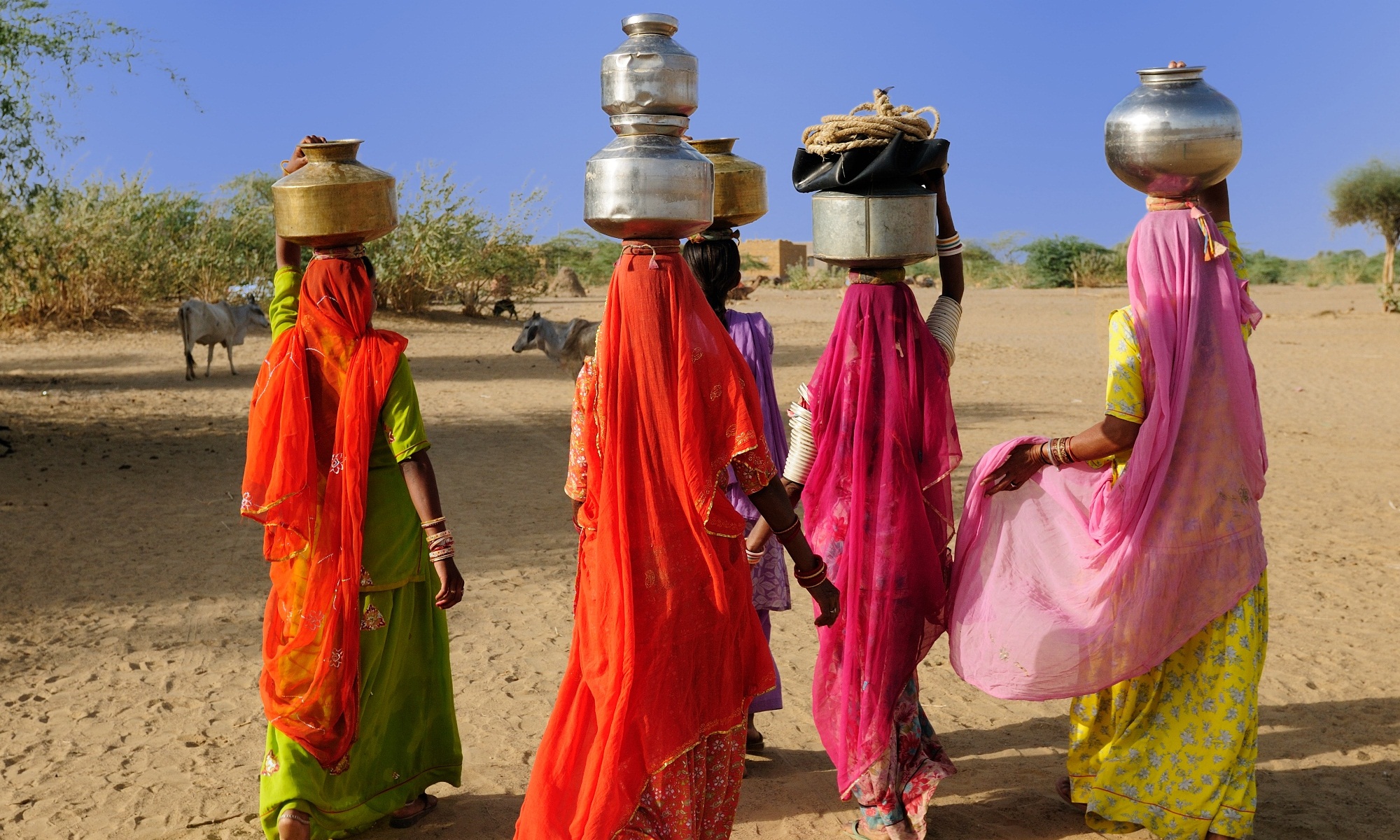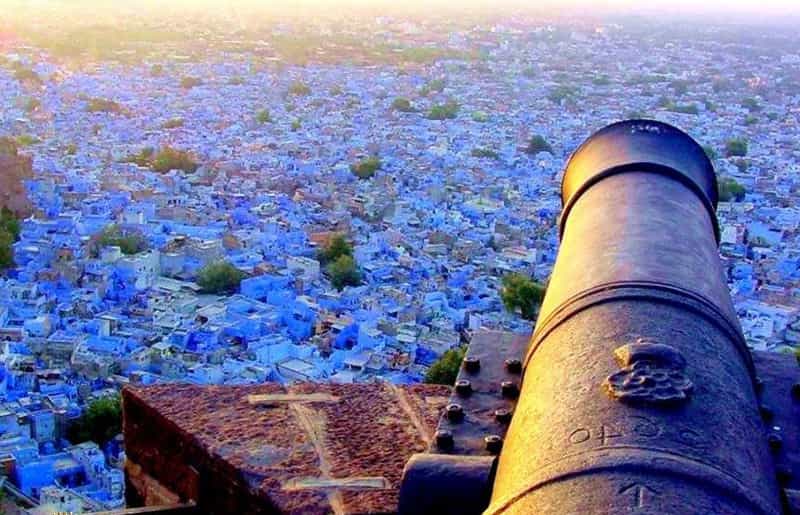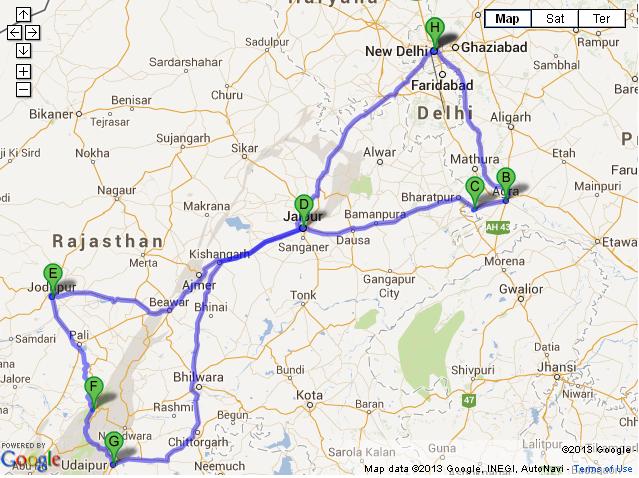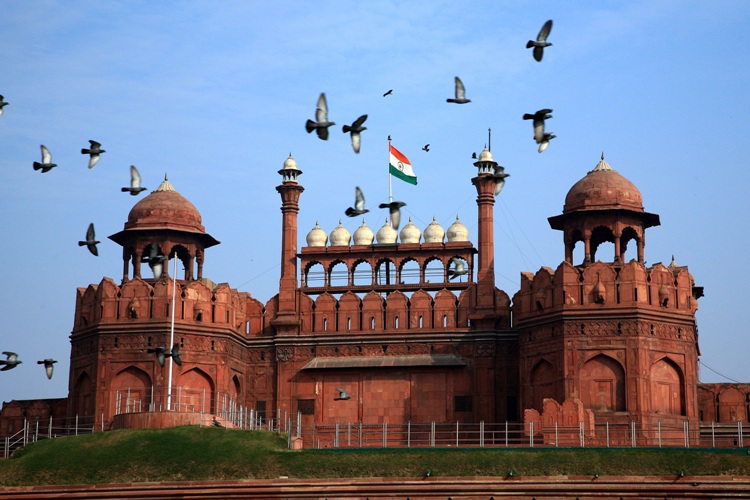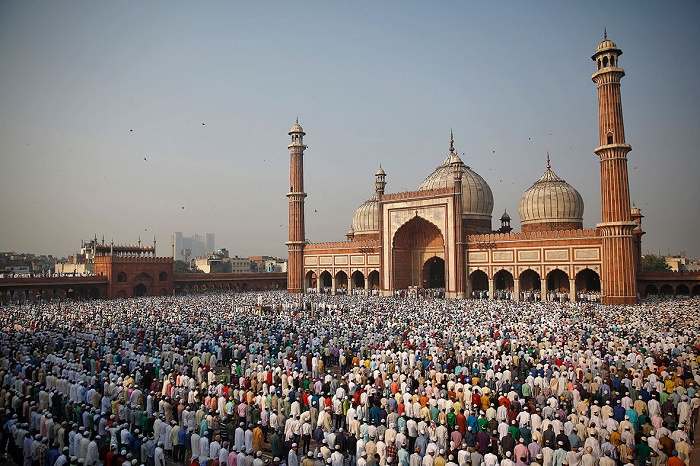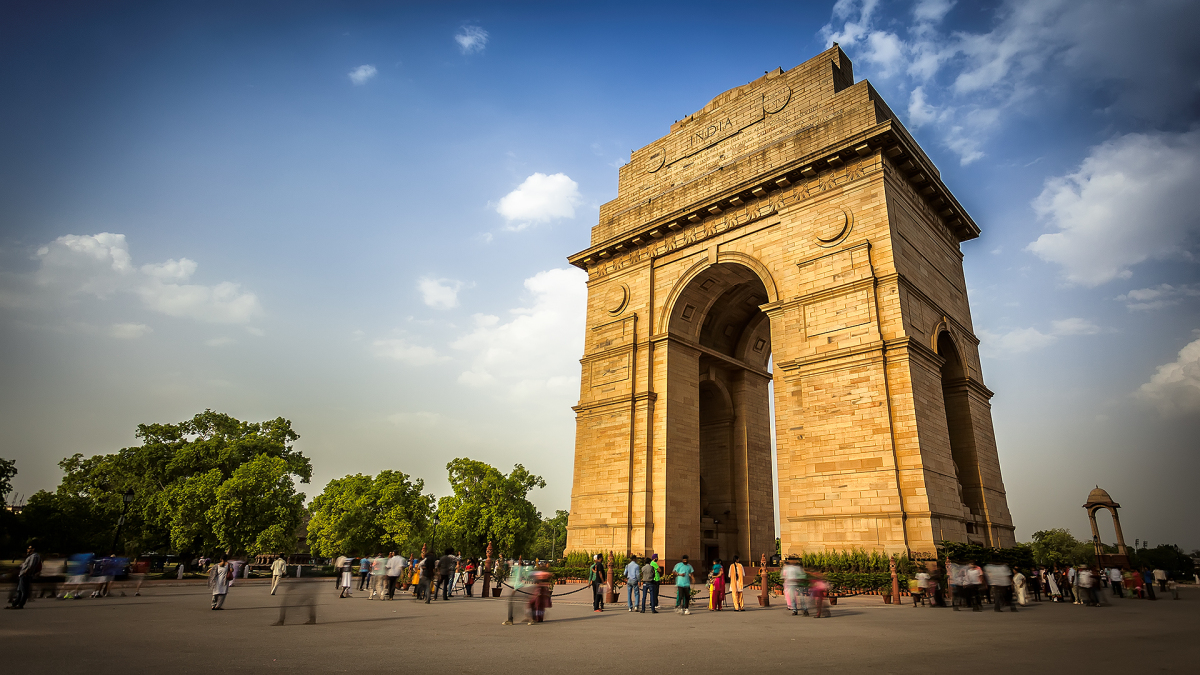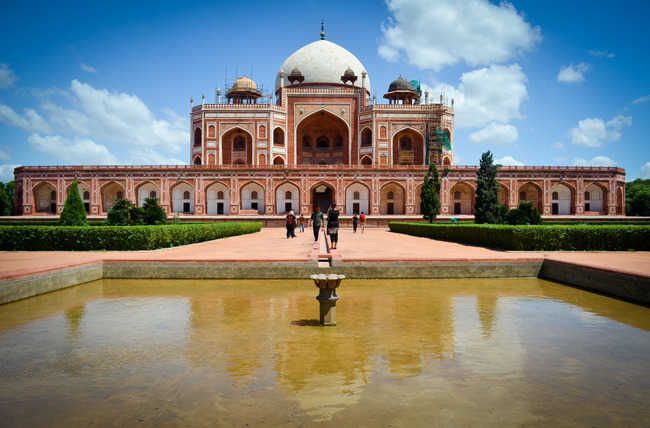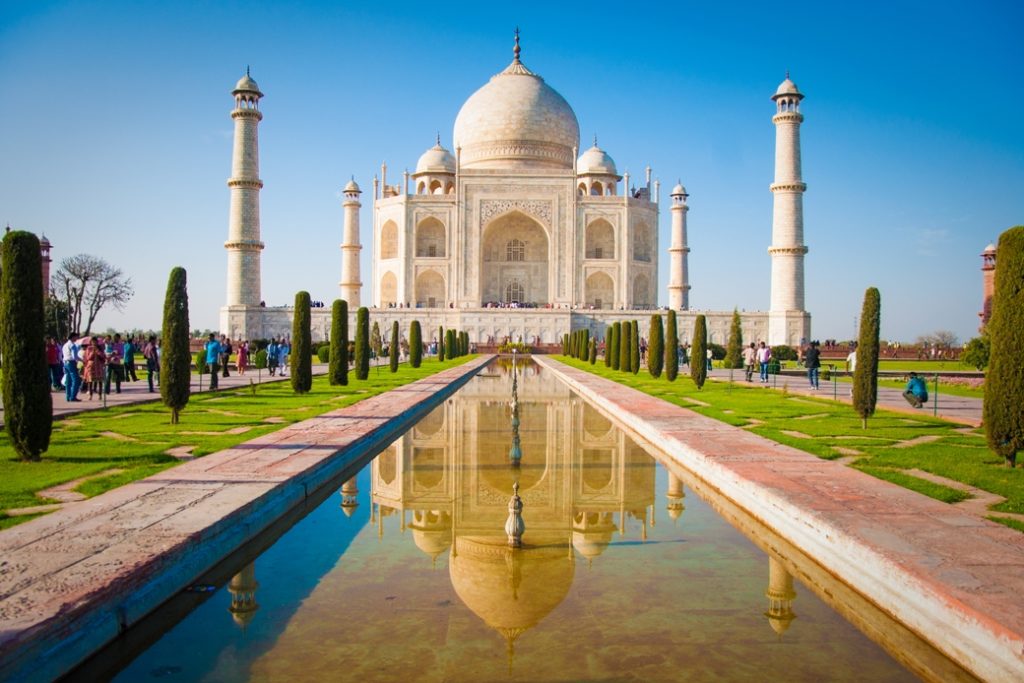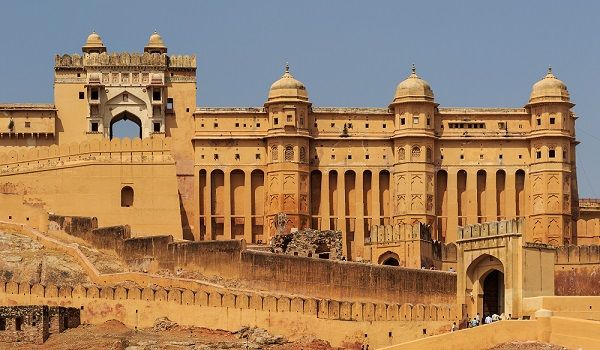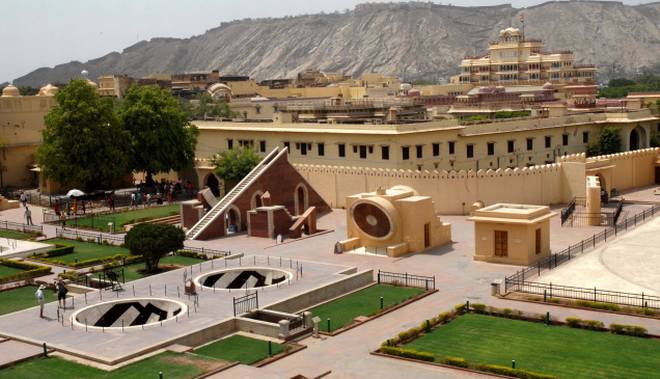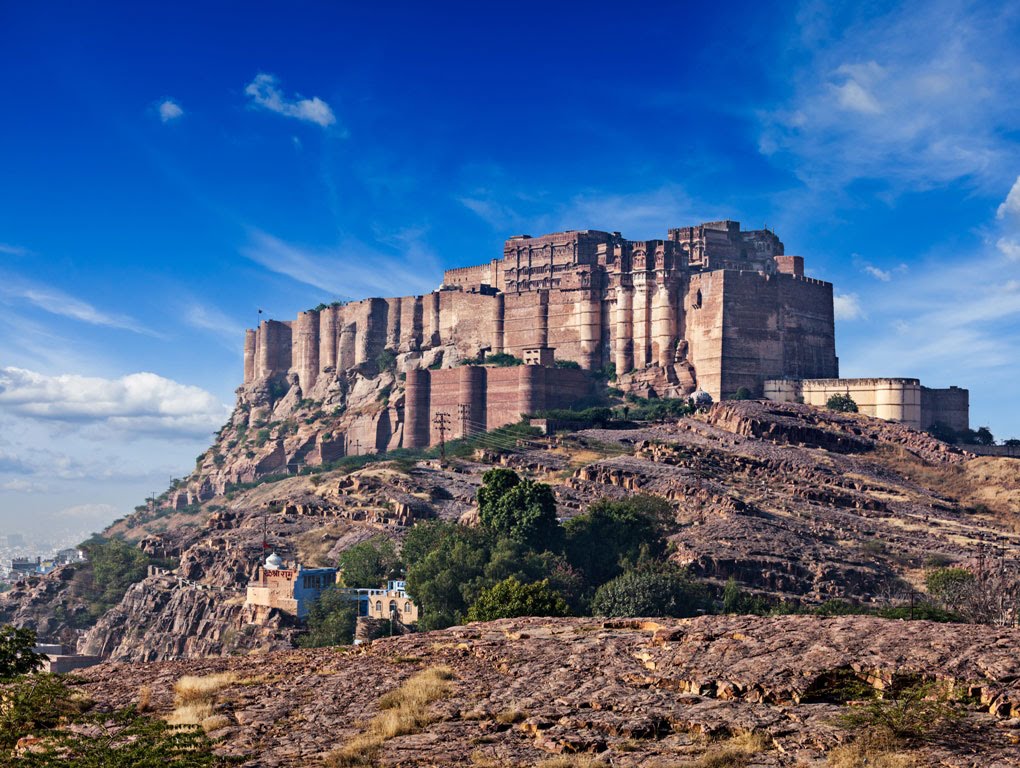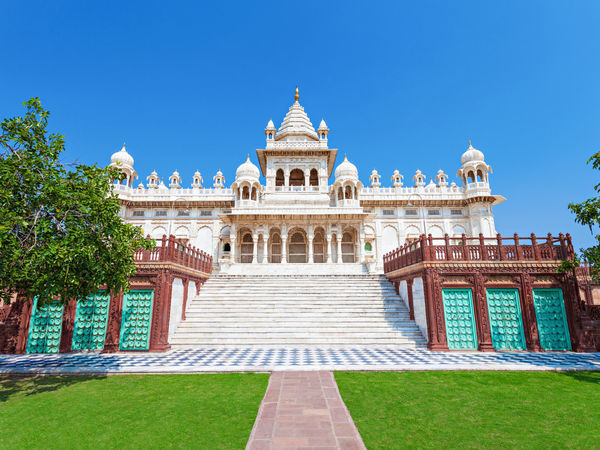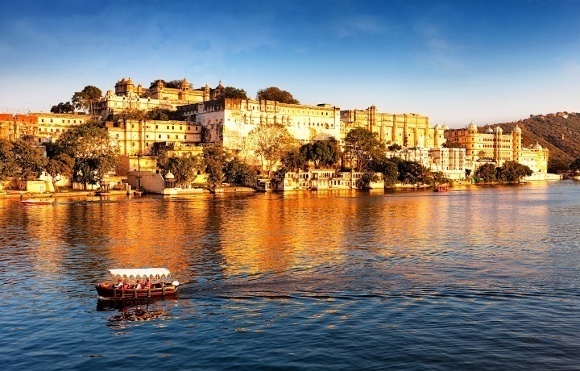Tour Overview
Embark on a captivating journey through the heart of India’s royal heritage with the Rajasthan Revealed Tour. This 13-day expedition unveils the diverse facets of Rajasthan’s rich culture, history, and architectural splendors. Begin your adventure in Delhi, where ancient and modern coexist, showcasing the tapestry of India’s evolution. Visit the iconic Red Fort and Jama Masjid, reflecting the grandeur of bygone eras. Marvel at the solemnity of Raj Ghat, the eternal resting place of Mahatma Gandhi, and glimpse the Presidential residence, Rashtrapati Bhawan. Witness the architectural brilliance of Humayun’s Tomb and Qutub Minar, precursors to the Taj Mahal.
Embark on a road trip to Agra, a city that embodies love and architectural brilliance. Behold the breathtaking Taj Mahal, a poignant symbol of eternal love, and explore the mighty Agra Fort with its palatial chambers. Venture to Jaipur, the Pink City, where resplendent forts and vibrant bazaars create an enchanting spectacle. Ascend the majestic Amber Fort on an elephant or jeep and admire the ornate Hawa Mahal, the Palace of Winds. Visit the City Palace complex and the remarkable Jantar Mantar observatory, bearing testament to the scientific prowess of ancient India.
Journey onward to Jodhpur, the Blue City, where Mehrangarh Fort and Jaswant Thada beckon with their architectural brilliance. Experience tranquility in the marble marvels of Ranakpur’s Jain Temples and embrace the serenity of Udaipur, the Venice of the East. Cruise on the placid waters of Lake Pichola, framed by the majestic City Palace, and explore the intricate architecture of the Folklore Museum, Sahelion ki Bari, and Jagdish Temple.
Conclude your adventure by retracing your steps to Delhi, enriched by the vibrant hues of Rajasthan’s history, culture, and landscapes. This tour is a captivating odyssey through India’s regal past, offering an unforgettable glimpse into the splendor of the Rajput kingdoms.
Duration: 13 Days / 12 Nights
Places: Delhi > Agra > Jaipur > Jodhpur > Ranakpur > Udaipur > Delhi
Destinations Covered
Delhi: Begin your journey in the bustling metropolis of Delhi, where ancient history and modernity converge. The Red Fort, a majestic sandstone fortress, and Jama Masjid, a grand mosque, provide a glimpse into the Mughal era’s architectural opulence. Raj Ghat, the solemn memorial of Mahatma Gandhi, evokes a sense of reverence. Admire the imposing Qutub Minar, a UNESCO World Heritage Site, and explore the intricate beauty of Humayun’s Tomb, a precursor to the iconic Taj Mahal. Witness the seat of power at Rashtrapati Bhawan and pay homage at India Gate, a war memorial symbolizing sacrifice.
Agra: Agra beckons with the timeless allure of the Taj Mahal, an exquisite marble mausoleum built by Shah Jahan in memory of his wife. Explore the Agra Fort, a UNESCO site, with its imposing walls and palatial chambers that resonate with historical tales. The city’s legacy as a Mughal stronghold comes alive as you traverse its streets.
Jaipur: Step into the Pink City, Jaipur, where the Amber Fort stands as a testament to Rajput grandeur. Ascend the fort on an elephant or jeep and marvel at its ornate halls and panoramic views. The Hawa Mahal, adorned with intricate lattice work, enchants with its unique architecture. Immerse yourself in the regal ambiance of the City Palace and witness the astronomical marvels of Jantar Mantar.
Jodhpur: Jodhpur, the Blue City, unfolds with the imposing Mehrangarh Fort perched on a hilltop. Its palatial interiors, courtyards, and intricate latticework showcase Rajput aesthetics. The Jaswant Thada, a marble memorial, exudes tranquility amidst lush gardens. The city’s blue-hued houses create an enchanting backdrop.
Ranakpur: The serene town of Ranakpur is home to exquisite Jain Temples. The Chaumukha Temple, with its intricate marble carvings, offers a spiritual retreat surrounded by lush greenery. The masterful architecture and peaceful atmosphere make Ranakpur a unique destination.
Udaipur: Udaipur’s romantic aura is reflected in its picturesque lakes and majestic palaces. Enjoy a boat ride on Lake Pichola, gliding past the City Palace and the serene Jag Mandir. The City Palace, a fusion of Rajput and Mughal styles, is a grand architectural marvel. The Folklore Museum, Sahelion ki Bari, and Jagdish Temple enrich the cultural tapestry of this Venice of the East.
Detailed Tour Plan
DAY 01 : ARRIVE DELHI
On arrival in India you will be greeted and escorted by our Executive to your hotel. (Rooms will be available from 1200 hrs)
In its 3000 years of existence; seven cities have risen where the present capital of India stands. Here you’ll encounter a fascinating blend of the ancient and the contemporary. Where government buildings, medieval palaces and bazaars exist beside a modern metropolis. Delhi is a city waiting to be explored.
Overnight at the hotel
DAY 02 : DELHI
After breakfast, enjoy the sightseeing of Delhi.
Drive past Red Fort (Closed on Mondays) the 17th century imposing fortress built in red sandstone is surrounded by a huge 33m high boundary wall. Inside are exquisite palaces and beautiful gardens.
Opposite the Red Fort lies Jama Masjid (Friday Mosque) made of red sandstone and white marble, completed in 1656 at a cost of one million Rupees has perfect proportions. Jama Masjid is India’s largest mosque where more than 20.000 people can kneel in prayer. The interior of the prayer hall is divided into aisles by arches. The walls and floors are of marble inlay panels.
Also visit the Raj Ghat on the banks of the river Yamuna, Mahatma Gandhi’s Memorial, where he was cremated following his assassination in January 1948. The memorial lies in the midst of landscaped gardens and made of a simple square platform of black marble inscribed with his last words “Hey Ram”. An eternal flame burns 24 hours.
You will drive Past Rashtrapati Bhawan once the Viceroy’s residence is now the official residence of the President of India.
Photo stop at India Gate Built of Bharatpur stone, commemorates the 70,000 Indian soldiers who died in the 1st world war. 13516 names of British and Indian soldiers killed in the Afghan War of 1919 are engraved on the arch and foundations.
Visit the Humayun’s Tomb, built by his wife Haji Begum in the 16th. Century. An early example of Mughal architecture considered the predecessor of the Taj Mahal.
Overnight at the hotel
DAY 0 3: DELHI / AGRA (Approx. 206 Kms – 5 hrs drive)
After leisurely breakfast drive to Agra. On the way visit Sikandra.
Sikandra: The mausoleum of the great Mughal King Akbar (1556-1605). Akbar began building it during his lifetime and his son, the Mughal Emperor Jahangir, completed it. It has a large arched entrance and green lawns, on which deer can be seen grazing, surround the tomb.
On arrival in Agra check in at the hotel
Agra stands on the right bank of the river Yamuna, was once the seat of the Mughal rulers, the zenith of art and an enshrined romance. A town famous for its beautiful medieval monuments. The passion of the Mughals for building endowed it with some of the loveliest buildings in the world.
Overnight at the hotel
DAY 04 : AGRA
After breakfast enjoy the sightseeing tour of Agra. Visit Taj Mahal (Closed on Fridays) – A poignant poetry in marble, stands serene and awesome on a raised marble platform, by the banks of the Yamuna. The most extravagant monument ever built for love is a tribute to the
Timelessness of art and love. The inimitable poem in white marble, one of the seven modern wonders of the world, the finest expression of love of Emperor Shah Jahan for his queen Mumtaz who died giving birth to their
14th child, is located on the banks of the Yamuna river here. The construction of the Taj had commenced in 1631AD and had ended in 1653AD. Workers were gathered from all over the country and from central Asia. About 20,000 people were recruited to translate this dream into reality. The main architect was Isa Khan who was brought from Iran.
Visit Agra Fort, -Built by the great Emperor Akbar in 1565 AD, the fort is a masterpiece of design and construction. Within the fort are a number of exquisite buildings, including the Moti
Masjid, Diwane-I-Am, Diwane-I-Khas and Musamman Burj, where the Emperor Shah Jahan died in imprisonment, besides Jahangir’s Palace, Khaas Mahal and the Sheesh Mahal.
Rest of the day is free.
Overnight at the hotel
DAY 05 : AGRA / FATEHPUR SIKRI / JAIPUR (Approx. 232 Kms / 05 hrs)
After breakfast drive to Jaipur. On the way visit Fatehpur Sikri.
It is a beautiful and deserted medieval city built by Akbar the Great in the 16th century to serve as the capital of his vast empire. The Mughals later abandoned this city for lack of water.
After sightseeing drive to Jaipur. Maharaja Jai Singh II built Jaipur in the 18th century. It is a planned city built with ancient Hindu rules as the colonial capital of a richly colorful state. The whole city was painted pink to welcome the visit of Prince Albert in 1853.
On arrival in Jaipur, check in at the hotel.
Overnight at the hotel
DAY 06 : JAIPUR
After breakfast, half-day excursion trip takes you to Amber Fort with Elephant or Jeep ride. The Amber Fort was built in 1592 by Raja Man Singh, is one of the finest examples of Rajput architecture. It gives extensive views over a deep narrow valley and the wider plains beyond.
En route, make a photo stop at the palace of winds the Hawa Mahal. A 5 storied building with 25cm thick facade from the 18 century having 953 windows and niches so that ladies of royal family could see the procession and events in the city without being visible to the people.
In the afternoon, visit City Palace. The beautiful palace was built by Maharaja Sawai Jai Singh during his reign. Among the various forts and palaces of Jaipur, City Palace stands apart, with its outstanding art and architecture. City Palace complex covers a huge area, which is divided into a series of gardens, courtyards and buildings. The premises consists several buildings like Chandra Mahal, Mubarak Mahal, Mukut Mahal, Maharani’s Palace, Shri Govind Dev Temple and the City Palace Museum.
Also visit Jantar Mantar (1728-34) by king astrologer Jai Singh II. The instruments are built of stone with marble facing on the important plains for measuring the harmony of the heavens.
Each instrument serves a particular function and each gives an accurate reading.
Overnight at the hotel
DAY 07 : JAIPUR / JODHPUR (Approx. 332 Kms – 07 hrs)
After breakfast drive to Jodhpur. Set on the edge of the Thar desert, the imperial city of Jodhpur echoes with tales of antiquity in the emptiness of the desert. Once the capital of the Marwar state, it was founded in 1459 A.D. by Rao Jodha chief of the Rathore clan of Rajputs who claimed to be descendants of Rama the epic hero of the Ramayana.
On arrival, check in at the hotel.
Overnight at the hotel
DAY 08 : JODHPUR
After breakfast enjoy the sightseeing of Jodhpur.
Visit Mehrangarh Fort, which was built by Rao Jodha in 1459. It has various pavillions beautifully decorated and at times filled like museums with the old royal artifacts. From the top of the fort one can get a bird’s eye view of the old city. You will notice the predominance of blue houses referred to as Brahmin houses – the colour being associated with the high caste.
Also visit Jaswant Thada. It is a white marble memorial built by Sardar Singh in 1899 in memory of Maharaja Jaswant Singh II. The monument, in its entirety, is built out of intricately
carved sheets of marble. These stones are extremely thin and polished so that they emit a warm glow when the sun’s rays dance across their surface.
Overnight at the hotel.
DAY 09 : JODHPUR / RANAKPUR ( Approx.169 Kms – 3 ½ hrs drive)
After breakfast, drive to Ranakpur. On arrival, visit the Ranakpur Jain Temples. Renowned for some marvelously carved Jain temples in amber stones, Ranakpur is one of the five holy places of the Jain community. These temples were created in the 15th century A.D. during the reign of Rana Kumbha and are enclosed within a wall. The central ‘Chaumukha’ or four-faced temple is dedicated to the venerated Tirthankara Rishabhji. Open on all four sides, it enshrines the four-faced image of Adinath. Sprawling over 48,000 sq.feet, the temple is an astounding creation with 29 halls and 1,444 pillars – all distinctly carved.
Images of 24 tirthankars are carved on the ‘Mandaps’ or porticoes in a corridor around the shrine with each mandap having a ‘Shikhar’ or spire adorned with little bells on the top. The gentle breeze wafting through the corridors move the bells creating celestial music all around the complex. Rising in three stories, the temple has four small shrines with 80 spires supported by 420 columns.
After the sightseeing, check in at the hotel.
Overnight at the hotel.
DAY 10 : RANAKPUR / UDAIPUR (Approx. 90 Kms – 02 hrs drive)
After breakfast, drive to Udaipur. Udaipur is known as the Venice of the East. It has to its credit some beautiful temples and gardens. It lies in the Girwa Valley amidst the Aravali hills of South Rajasthan. The City is considered a Romantic city with its lakes, gardens, temples and –an Oasis in the Thar Desert. Arrive Udaipur and transfer to the Hotel.
Later visit enjoy Boat ride on Lake Pichola. Lake Pichola derives its name from Pichola Village. Maharana Udai Singh enlarged the lake after he founded the city of Udaipur. This picturesque 4 km long and 3 km wide lake encloses the Jag Niwas Island and the Jag Mandir. The City Palace extends along its eastern banks.
Overnight at the hotel
DAY 11 : UDAIPUR
After breakfast, enjoy the sightseeing of Udaipur, which includes the visits to the following:
City Palace: One of the largest royal complexes in Rajasthan, the City Palace stands majestically on a promontory on the picturesque Lake Pichola. The complex boasts 11 constituent Mahals (palaces), with balconies, towers and cupolas, offering a breathtaking view of the lake and its surroundings. The Durbar Hall, which was used as a venue for formal occasions like state banquets and meetings, has most luxurious interiors highlighted by some of the largest chandeliers in the world. The Palace also houses a museum displaying a number of interesting artifacts.
Folklore Museum: Bhartiya lok Kala mandal was founded by Padma Shri Devi Lal Samar in 1952. The main objective of the Institute is to conduct studies on the folk art, songs and festivals of regions like Rajasthan, Gujarat, Madhya Pradesh etc and to revive a vanishing folk culture. The institute has a puppet unit that trains children, teachers and other artists in the art of puppetry, as this is a very powerful non-conventional educative medium.
Sahelion ki Bari:The Sahelion-ki-Bari Garden was built in early 18th century AD as a retreat for ladies of the royal household to spend their time in leisure. The enchantingly beautiful Garden is famous for its lotus pool, fountains (in the shape of birds), lush green lawns, flowerbeds, and marble pavilions, offering a breathtaking view to visitors.
Jagdish Temple:Built in 1651 AD by Maharana Jagat Singh, Jagdish Temple is the largest and the most beautiful temple in Udaipur. Dedicated to Lord Vishnu, the temple is famous for its beautiful sculpted images and towering shikhara. The temple represents a fine example of Indo-Aryan architectural style.
Overnight at the hotel
DAY 12 : UDAIPUR / DELHI (Flight)
After breakfast transfer to the airport to board the flight for Delhi. (Check out time is 1200 hrs)
Arrive Delhi and transfer to the hotel. (Rooms will be available on Day Use only)
In time transfer to the airport to board the flight back home.
DAY 13 : DELHI DEPARTURE
Today you will connect the flight back home.
End of Tour
FAQs about the Tour
Q1: What is the main highlight of Delhi that I shouldn’t miss?
A1: The Red Fort, a magnificent sandstone fortress, and the iconic Qutub Minar are among Delhi’s must-see attractions, reflecting its rich historical and architectural heritage.
Q2: Can I visit the Taj Mahal during the tour?
A2: Yes, the tour includes a visit to the Taj Mahal in Agra. It’s one of the world’s most famous monuments and a symbol of eternal love.
Q3: What is the significance of Jaipur’s “Pink City” nickname?
A3: Jaipur’s buildings were painted pink in 1853 to welcome Prince Albert. The color symbolizes hospitality and is now an iconic feature of the city.
Q4: Are there any other forts besides the Amber Fort in Jaipur?
A4: Yes, Jaipur boasts the stunning Jaigarh Fort and Nahargarh Fort, both offering panoramic views of the city and surrounding landscapes.
Q5: What is the special feature of Mehrangarh Fort in Jodhpur?
A5: Mehrangarh Fort stands majestically on a hilltop, showcasing intricate architecture, stunning palaces, and panoramic vistas of the “Blue City” below.
Q6: What sets Ranakpur apart from other destinations on the tour?
A6: Ranakpur is known for its immaculate marble Jain Temples, particularly the Chaumukha Temple, with its intricate carvings and peaceful ambiance.
Q7: How does Udaipur earn its moniker “Venice of the East”?
A7: Udaipur is often called “Venice of the East” due to its picturesque lakes, including Lake Pichola, which are central to the city’s charm.
Q8: Can you elaborate on the City Palace in Udaipur?
A8: The City Palace is a grand complex with several palaces, courtyards, and museums. It showcases the amalgamation of Rajput and Mughal architectural styles.
Q9: Is there any significance to the blue houses in Jodhpur?
A9: The blue houses in Jodhpur, also known as the “Blue City,” are associated with the Brahmin caste and are believed to repel heat and keep interiors cool.
Q10: How does the tour end in Delhi?
A10: The tour concludes with a transfer to the airport in Delhi for your departure, leaving you with memories of Rajasthan’s regal heritage and cultural treasures.
Get a Quote: Call/Whatsapp: +91 9810954649 or Fill Contact Form
